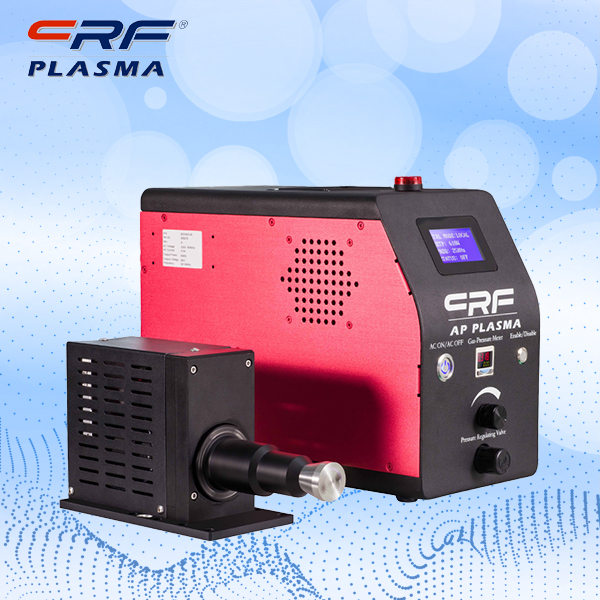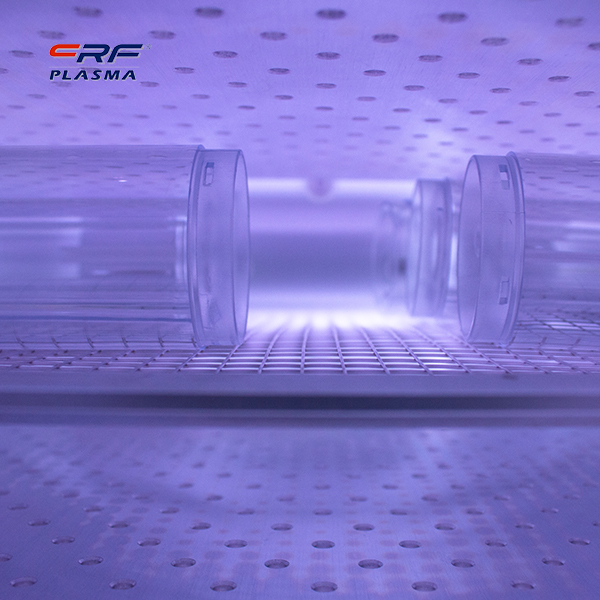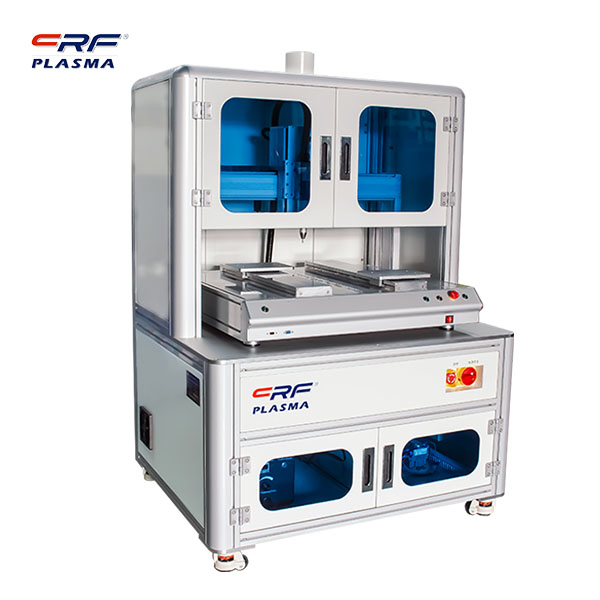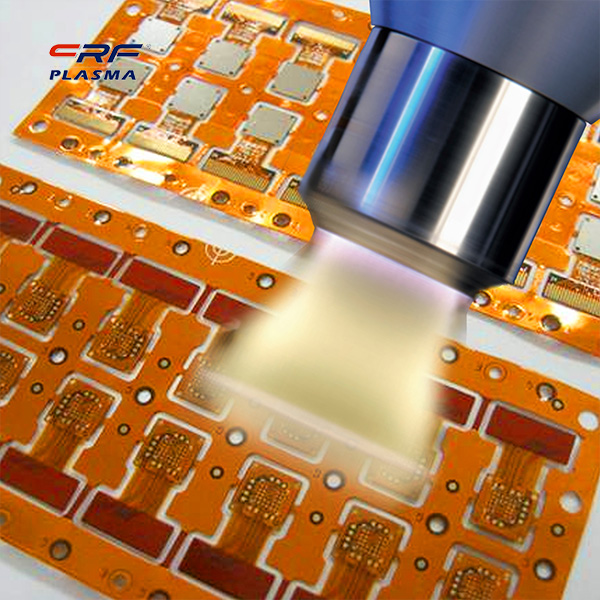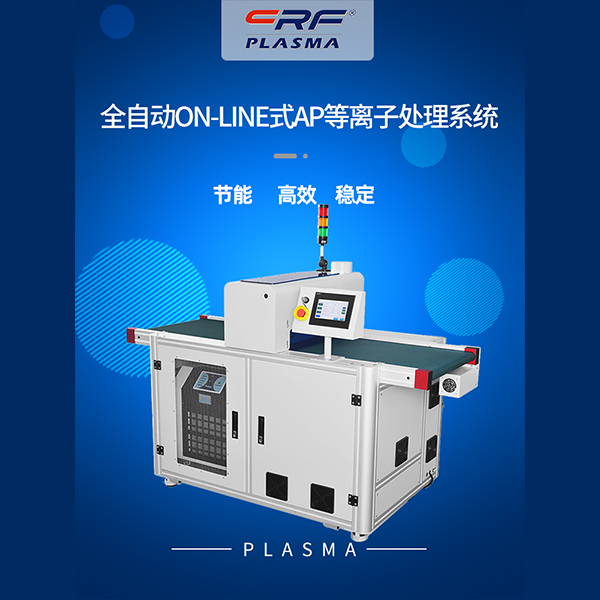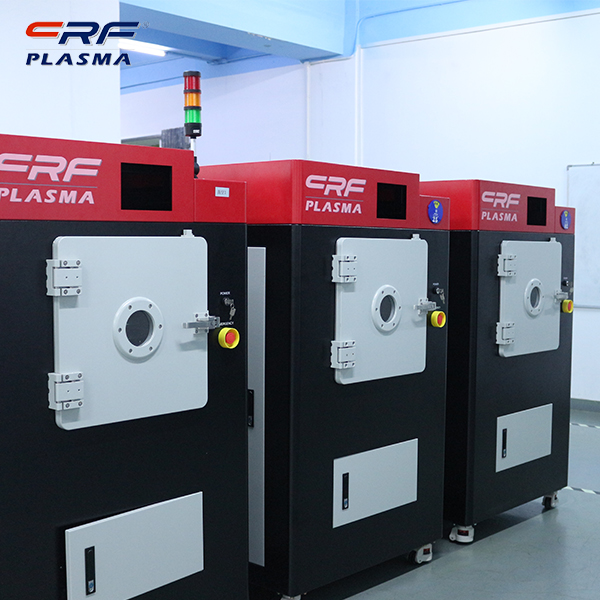
Welcome to Shenzhen Sing Fung Intelligent Manufacturing Co., Ltd.
E-mail:shaobo@sfi-crf.com
The low-temperature plasma has enough energy to break the chemical bonds in the biomass feedstock
- Categories:Industry News
- Author:Plasma cleaning machine-CRF plasma plasma equipment-plasma surface treatment machine manufacturer-chengfeng intelligent manufacturing
- Origin:
- Time of issue:2021-12-31
- Views:
(Summary description)The low-temperature plasma has enough energy to break the chemical bonds in the biomass feedstock: With the in-depth research on biomass refining all over the world, new bio-refining technologies continue to emerge. Low-temperature plasma technology has become one of the promising biomass refining technologies with its unique chemical activity and high energy. Plasma is usually juxtaposed with solid, liquid, and gaseous states, and is called the fourth state of matter. According to the energy, temperature and ion density of its system, plasma is usually divided into high-temperature plasma and low-temperature plasma. High-temperature plasma is mainly used in controllable nuclear fusion in the energy field, while low-temperature plasma is more closely related to modern industry. Low-temperature plasma refers to a plasma with high electron temperature but low system temperature. The temperature of electrons can reach more than 10,000K, while the temperature of heavy particles such as ions and atoms can be as low as 300-500K. The huge temperature difference between electrons and heavy particles has two effects. On the one hand, the electrons have enough energy to excite, ionize and dissociate the reactant molecules. On the other hand, the system can be kept at a low temperature or even close to room temperature. Under the action of the high-voltage electric field between the electrodes, a large number of high-energy particles such as electrons, ions, molecules, neutral atoms, excited atoms, photons and free radicals are produced, and the total positive and negative charges of the particles are equal, and they are macroscopically charged. sex. The highly active particles enriched in the low-temperature plasma space have the following characteristics: an active atmosphere, the highly active particles have high kinetic energy and internal energy under the action of an electric field, which provide activation energy for chemical reactions, and have the possibility of chemical reactions sex. The production process of bio-based products is the process of breaking and depolymerizing the chemical bonds in the biomass matrix and the formation-polymerization process of new chemical bonds under the action of physics and chemistry. Since the energy of most active particles in low-temperature plasma is higher than the bond energy of common chemical bonds in biomass raw materials, low-temperature plasma has enough energy to break the chemical bonds in biomass raw materials, and has the ability to polymerize with the biomass matrix. The possibility of depolymerization reaction has broad application prospects in the field of biomass refining. The low-temperature plasma biomass refining mechanism provides a new way for efficient and clean biomass refining. Biomass resources are rich in components and complex in structure. During the evolution process, a series of natural barriers against degradation have been formed. The use of biological, physical and chemical methods to change or remove the barriers of its structure and composition is the focus of research on efficient refining of biomass resources. High-energy particles generated by oxygen or air low-temperature plasma are used to impact textile cotton fibers, replacing conventional chemical wet processing procedures. Through the introduction of the waxy and unique groups on the surface of textile fibers or fabrics, the molecules attached to the fiber surface are oxidized and decomposed, and the molecular chains are cut to generate carbon dioxide and water to be removed, and some low molecules are oxidized. , It forms substances containing -OH, -COOH and other easily soluble groups in water to be removed, and relieves the natural barrier formed by the stratum corneum of textile fibers and pectin. Similarly, low-temperature plasma can be used to remove the keratin and pectin and other natural anti-degradation barriers on the surface of the straw to increase its permeability by 10-100 times, which will help the enzymatic conversion of biomass resources such as straw. In addition, the low-temperature plasma has a low temperature, will not cause thermal damage to the bacterial species, and the concentration of new particles is high, which can produce obvious mutagenic effects. Therefore, low-temperature plasma is also used in biomass pretreatment/refining process microorganisms Breeding and transformation. The low-temperature plasma technology does not use strong corrosive chemicals such as acids and alkalis. The reaction process is pollution-free, harmless to humans, and corrosive to equipment. The entire process and its products are environmentally friendly. The low-temperature plasma modification technology of biomass has many advantages such as less pollution, no damage to the performance of the matrix, high efficiency, and far lower energy requirements than thermochemical reactions. It is widely used in the field of biomass modification, such as wood modification and texti
The low-temperature plasma has enough energy to break the chemical bonds in the biomass feedstock
(Summary description)The low-temperature plasma has enough energy to break the chemical bonds in the biomass feedstock:
With the in-depth research on biomass refining all over the world, new bio-refining technologies continue to emerge. Low-temperature plasma technology has become one of the promising biomass refining technologies with its unique chemical activity and high energy. Plasma is usually juxtaposed with solid, liquid, and gaseous states, and is called the fourth state of matter. According to the energy, temperature and ion density of its system, plasma is usually divided into high-temperature plasma and low-temperature plasma. High-temperature plasma is mainly used in controllable nuclear fusion in the energy field, while low-temperature plasma is more closely related to modern industry.
Low-temperature plasma refers to a plasma with high electron temperature but low system temperature. The temperature of electrons can reach more than 10,000K, while the temperature of heavy particles such as ions and atoms can be as low as 300-500K. The huge temperature difference between electrons and heavy particles has two effects.
On the one hand, the electrons have enough energy to excite, ionize and dissociate the reactant molecules. On the other hand, the system can be kept at a low temperature or even close to room temperature. Under the action of the high-voltage electric field between the electrodes, a large number of high-energy particles such as electrons, ions, molecules, neutral atoms, excited atoms, photons and free radicals are produced, and the total positive and negative charges of the particles are equal, and they are macroscopically charged. sex.
The highly active particles enriched in the low-temperature plasma space have the following characteristics: an active atmosphere, the highly active particles have high kinetic energy and internal energy under the action of an electric field, which provide activation energy for chemical reactions, and have the possibility of chemical reactions sex. The production process of bio-based products is the process of breaking and depolymerizing the chemical bonds in the biomass matrix and the formation-polymerization process of new chemical bonds under the action of physics and chemistry.
Since the energy of most active particles in low-temperature plasma is higher than the bond energy of common chemical bonds in biomass raw materials, low-temperature plasma has enough energy to break the chemical bonds in biomass raw materials, and has the ability to polymerize with the biomass matrix. The possibility of depolymerization reaction has broad application prospects in the field of biomass refining.
The low-temperature plasma biomass refining mechanism provides a new way for efficient and clean biomass refining. Biomass resources are rich in components and complex in structure. During the evolution process, a series of natural barriers against degradation have been formed. The use of biological, physical and chemical methods to change or remove the barriers of its structure and composition is the focus of research on efficient refining of biomass resources.
High-energy particles generated by oxygen or air low-temperature plasma are used to impact textile cotton fibers, replacing conventional chemical wet processing procedures. Through the introduction of the waxy and unique groups on the surface of textile fibers or fabrics, the molecules attached to the fiber surface are oxidized and decomposed, and the molecular chains are cut to generate carbon dioxide and water to be removed, and some low molecules are oxidized. , It forms substances containing -OH, -COOH and other easily soluble groups in water to be removed, and relieves the natural barrier formed by the stratum corneum of textile fibers and pectin.
Similarly, low-temperature plasma can be used to remove the keratin and pectin and other natural anti-degradation barriers on the surface of the straw to increase its permeability by 10-100 times, which will help the enzymatic conversion of biomass resources such as straw.
In addition, the low-temperature plasma has a low temperature, will not cause thermal damage to the bacterial species, and the concentration of new particles is high, which can produce obvious mutagenic effects. Therefore, low-temperature plasma is also used in biomass pretreatment/refining process microorganisms Breeding and transformation.
The low-temperature plasma technology does not use strong corrosive chemicals such as acids and alkalis. The reaction process is pollution-free, harmless to humans, and corrosive to equipment. The entire process and its products are environmentally friendly. The low-temperature plasma modification technology of biomass has many advantages such as less pollution, no damage to the performance of the matrix, high efficiency, and far lower energy requirements than thermochemical reactions. It is widely used in the field of biomass modification, such as wood modification and texti
- Categories:Industry News
- Author:Plasma cleaning machine-CRF plasma plasma equipment-plasma surface treatment machine manufacturer-chengfeng intelligent manufacturing
- Origin:
- Time of issue:2021-12-31 15:24
- Views:
The low-temperature plasma has enough energy to break the chemical bonds in the biomass feedstock:
With the in-depth research on biomass refining all over the world, new bio-refining technologies continue to emerge. Low-temperature plasma technology has become one of the promising biomass refining technologies with its unique chemical activity and high energy. Plasma is usually juxtaposed with solid, liquid, and gaseous states, and is called the fourth state of matter. According to the energy, temperature and ion density of its system, plasma is usually divided into high-temperature plasma and low-temperature plasma. High-temperature plasma is mainly used in controllable nuclear fusion in the energy field, while low-temperature plasma is more closely related to modern industry.
Low-temperature plasma refers to a plasma with high electron temperature but low system temperature. The temperature of electrons can reach more than 10,000K, while the temperature of heavy particles such as ions and atoms can be as low as 300-500K. The huge temperature difference between electrons and heavy particles has two effects.
On the one hand, the electrons have enough energy to excite, ionize and dissociate the reactant molecules. On the other hand, the system can be kept at a low temperature or even close to room temperature. Under the action of the high-voltage electric field between the electrodes, a large number of high-energy particles such as electrons, ions, molecules, neutral atoms, excited atoms, photons and free radicals are produced, and the total positive and negative charges of the particles are equal, and they are macroscopically charged. sex.
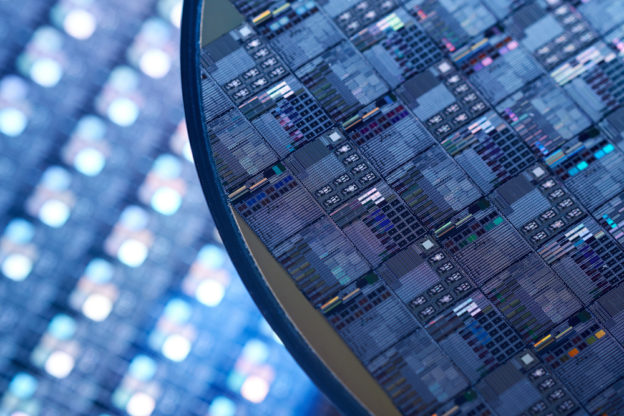 The highly active particles enriched in the low-temperature plasma space have the following characteristics: an active atmosphere, the highly active particles have high kinetic energy and internal energy under the action of an electric field, which provide activation energy for chemical reactions, and have the possibility of chemical reactions sex. The production process of bio-based products is the process of breaking and depolymerizing the chemical bonds in the biomass matrix and the formation-polymerization process of new chemical bonds under the action of physics and chemistry.
The highly active particles enriched in the low-temperature plasma space have the following characteristics: an active atmosphere, the highly active particles have high kinetic energy and internal energy under the action of an electric field, which provide activation energy for chemical reactions, and have the possibility of chemical reactions sex. The production process of bio-based products is the process of breaking and depolymerizing the chemical bonds in the biomass matrix and the formation-polymerization process of new chemical bonds under the action of physics and chemistry.
Since the energy of most active particles in low-temperature plasma is higher than the bond energy of common chemical bonds in biomass raw materials, low-temperature plasma has enough energy to break the chemical bonds in biomass raw materials, and has the ability to polymerize with the biomass matrix. The possibility of depolymerization reaction has broad application prospects in the field of biomass refining.
The low-temperature plasma biomass refining mechanism provides a new way for efficient and clean biomass refining. Biomass resources are rich in components and complex in structure. During the evolution process, a series of natural barriers against degradation have been formed. The use of biological, physical and chemical methods to change or remove the barriers of its structure and composition is the focus of research on efficient refining of biomass resources.
High-energy particles generated by oxygen or air low-temperature plasma are used to impact textile cotton fibers, replacing conventional chemical wet processing procedures. Through the introduction of the waxy and unique groups on the surface of textile fibers or fabrics, the molecules attached to the fiber surface are oxidized and decomposed, and the molecular chains are cut to generate carbon dioxide and water to be removed, and some low molecules are oxidized. , It forms substances containing -OH, -COOH and other easily soluble groups in water to be removed, and relieves the natural barrier formed by the stratum corneum of textile fibers and pectin.
Similarly, low-temperature plasma can be used to remove the keratin and pectin and other natural anti-degradation barriers on the surface of the straw to increase its permeability by 10-100 times, which will help the enzymatic conversion of biomass resources such as straw.
In addition, the low-temperature plasma has a low temperature, will not cause thermal damage to the bacterial species, and the concentration of new particles is high, which can produce obvious mutagenic effects. Therefore, low-temperature plasma is also used in biomass pretreatment/refining process microorganisms Breeding and transformation.
The low-temperature plasma technology does not use strong corrosive chemicals such as acids and alkalis. The reaction process is pollution-free, harmless to humans, and corrosive to equipment. The entire process and its products are environmentally friendly. The low-temperature plasma modification technology of biomass has many advantages such as less pollution, no damage to the performance of the matrix, high efficiency, and far lower energy requirements than thermochemical reactions. It is widely used in the field of biomass modification, such as wood modification and textile fiber modification. Properties, starch modification, wood plastic preparation, modification of the contact channel of biomass raw material enzyme molecules, etc.
After plasma modification of biomass raw materials such as wood and textile fibers, the chemical composition and structure of the surface change, generating a large number of free radicals and attracting many polar groups, thereby optimizing the surface properties, such as the surface roughness of the material. Increase, increase in surface area, change in friction properties, change in hydrophilicity, change in adhesion, change in surface chemical composition, formation of activated groups and new groups, change in surface energy, increase in binding energy with external substances, and attract biological activity The molecules or biological enzymes can improve its biocompatibility and so on.
Scan the QR code to read on your phone

TEL:0755-3367 3020 / 0755-3367 3019

E-mail:sales-sfi@sfi-crf.com

ADD:Mabao Industrial Zone, Huangpu, Baoan District, Shenzhen




